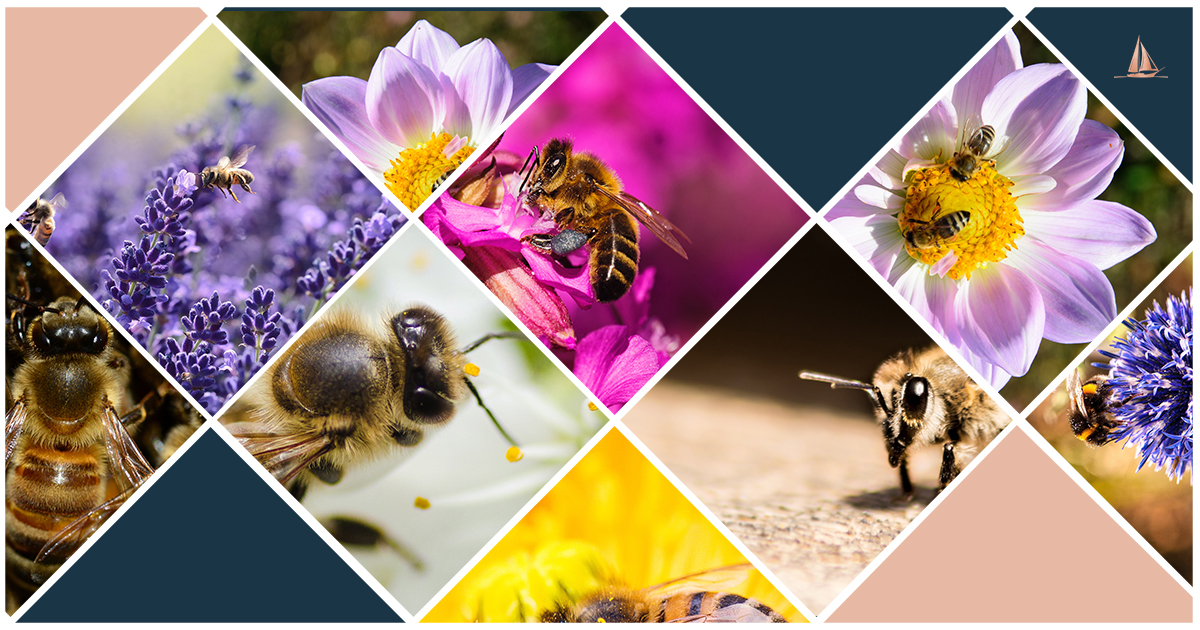About one third of global crops depend on the cross-pollinating power of bees. More than $15 Billion dollars of crops per year are pollinated by bees in the United States alone. And those bees are in trouble.
To provide an analogy of what this problem is like in the business world, you first have to understand the role of honey bees in the agricultural industry. Honey bees are like the engineers and product managers in much of the agricultural world. Without them, much of the agricultural products (read food) would not exist and would never make it to market.
Bees are the cross functional organization and linchpin to $15 billion dollar industry
- Bees gather resources, build growth engines for our products, build out the pipelines, collaborate across multiple roles and disciplines, all with very little fuss
- They’re door to door or blossom to blossom salesmen, nectar is their currency
- They scratch out a living as pollinating service providers and fuel a multi-billion dollar agricultural industry
- They also make their own product that is coveted by thousands of different species across the globe; honey
Honey badgers named themselves in praise of it. Cheerios are made edible by it. Children’s fingers are made sticky by it. And since this global workforce is disappearing, the production of honey and much of our food supply is in real trouble.
You may or may not know this but honey bees are dying in droves. Scientists now believe that much of the decline is due to Colony Collapse Disorder, or CCD, which refers to the unexplained disappearance and dying of honey bee colonies. Little is known about CCD, and that has many beekeepers, farmers, and the general public worried.
What’s Causing Colony Collapse Disorder?
Researchers think this CCD may be caused by a number of interwoven factors:
- Pesticide use on farms. Some toxic pesticides meant to kill pests can harm the honey bees needed for pollination. Many pesticides banned by other countries (because they harm bees) are still available in the United States
- Global warming, which has caused flowers to bloom at different times; earlier or later than usual When pollinators come out of hibernation, the flowers that normally provide the food they need, have already bloomed
- Habitat loss brought about by development, abandoned farms, growing crops without leaving habitat for wildlife, and growing gardens with flowers that are not friendly to pollinators
- Parasites such as harmful mites
IT BOILS DOWN TO THIS: NO BEES, NO FOOD.
Whole Foods created a lovely little infographic (featured below) of what the produce section of the grocery store would look like without food.

As you can see, the options would be dramatically limited.
Someone worth knowing who’s an ally and innovative beekeeper, John Miller of Miller Honey Farms, lends some insight into the situation in his TED talk. He and his family have been in the bee business for over 120 years. And he’s had to make some interesting changes to the family business in the face of this challenge.
This isn’t just a Big global problem, it’s a BIG business problem for leaders in a BIG industry. Or to the savvy entrepreneur, or smart farmer, this is a HUGE opportunity.
4 Opportunities in the Big Bee Business
- Better food for bees – Right now, with so little forage available (places to shop for food), beekeepers are stuck serving up pollen patties, think cafeteria or junk food for bees. These are an unsustainable diet of processed food like Top Ramen and Bud Light for college kids. You may pass your mid-terms but that nobel prize may remain out of reach on that diet. Bees need better sources of food.
- More Wild Pasteur – fewer food deserts and more Whole Foods options for bees. You know, organically grown, locally sourced forage. We need more meadows of wild flowers and less perfectly groomed lawns. Think English garden.
- Addressing the Pesticides – Pesticides kill all the bugs, even the good ones. They cause neurological disease that impairs the bees – the guards of the hive prevent the contaminated bees from entering the hive. The United States continues to use pesticides that have been made illegal in other parts of the world.
- Eradicating the bug on the bug – Verroa Destructor is a bee parasite, a mite that gives bees disease like mosquitos do to us. And unless you’re Ant Man, It’s really hard to kill a bug on a bug.
These are some of the opportunities for the business community to get innovative and involved in solving. I look forward to seeing your pitches on Shark Tank, but for now, share your thoughts with me in the comments.





0 Comments